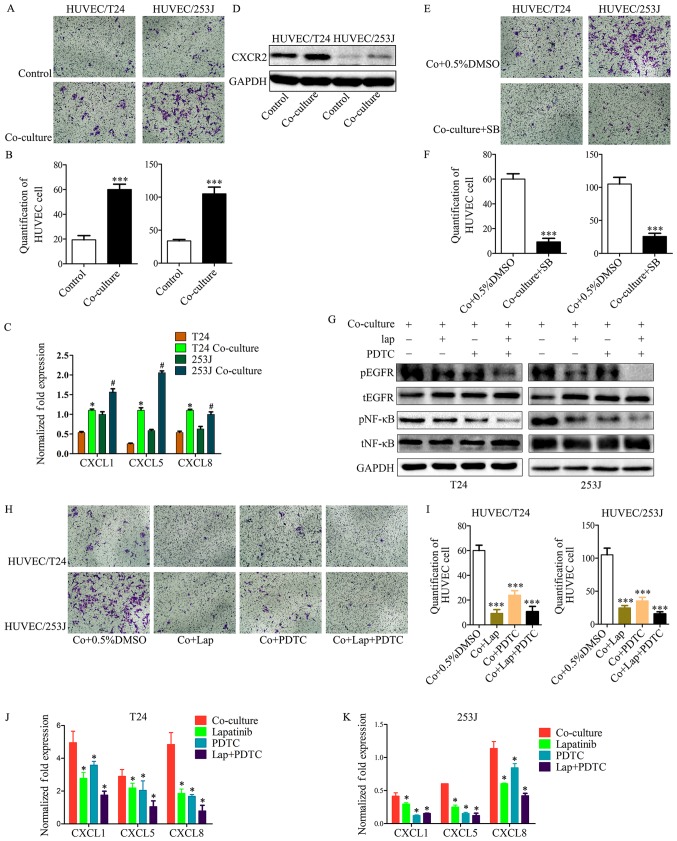Figure 5.
Cancer cell treatment by the co-culture system led to enhanced HUVEC recruitment. (A and B) T24/253J treatment by co-culture with HUVECs and enhanced HUVEC recruitment (magnification, ×200). ***P<0.001 vs. control. (C) RT-qPCR for screening the expression of CXCL1, CXCL5 and CXCL8 in T24/253J following co-culture with HUVECs. *P<0.05 vs. T24; #P<0.05 vs. 253J. (D) Western blot analysis indicates that the co-culture of HUVECs leads to the upregulation of CXCR2. (E and F) Inhibition of the CXCR2 pathway following co-culture treatment in HUVECs, and reduced HUVEC recruitment (magnification, ×200). ***P<0.001 vs. Co+0.5%DMSO. (G) Western blot analysis indicates inhibition of the EGFR-NF-κB pathway in T24/253J following co-culture with HUVECs. (H and I) Inhibition of the EGFR-NF-κB pathway in T24/253J following co-culture with HUVECs, and reduced endothelial cell recruitment (magnification, ×200). ***P<0.001 vs. Co+0.5%DMSO. (J and K) RT-qPCR for screening the expression of CXCL1, CXCL5 and CXCL8 in T24/253J following co-culture with HUVECs, followed by inhibition of the EGFR-NF-κB pathway. *P<0.05 vs. co-culture. HUVEC, human umbilical vein endothelial cell; co+0.5%DMSO, co-culture + 0.5% dimethyl sulfoxide; RT-qPCR, reverse transcription-quantitative polymerase chain reaction; EGFR, epidermal growth factor receptor; NF, nuclear factor; SB, SB225002; lap, lapatinib; p, phosphorylated; t, total.

